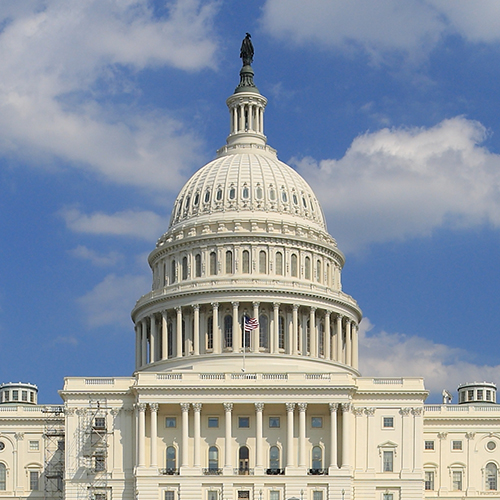Professor Tony Greenwald expected phone calls after hearing Hillary Clinton mention implicit bias during the first presidential debate. As if on cue, The New York Times and other media quickly contacted him for a quote.
Greenwald, UW professor of psychology, has been a leader in the study of implicit bias for decades. The term refers to attitudes and stereotypes that affect perception and judgment without our being aware of it.
To explore our implicit biases, Greenwald and Harvard colleague Mahzarin Banaji developed the Implicit Association Test (IAT), which has been taken online at Project Implicit's educational site more than 20 million times since 1998. There are 14 versions of the test, looking at biases including race, religion, sexual orientation, ethnicity, age, weight, and disability. There’s even an election version that measures unspoken support for US Presidential candidates. Greenwald and Banaji discuss the IAT and its findings in their 2013 book, Blindspot.

The format of the test is simple. Users quickly categorize images and words as they flash on the screen. When asked to combine words and images that might seem discordant — a picture of a wasp and the word "pleasure," for example — there is often a delay in response time. That delay is an indicator of bias, and it persists even when the user knows what’s being tested. “As long as people cooperate with the instructions and do the tasks rapidly, the test is going to work, as it has for all these years,” says Greenwald.
The first IAT paired images of flowers and insects with pleasant and unpleasant words. As Greenwald suspected, respondents clicked quickly when pairing flowers with positive words and more slowly when pairing insects with those words. When Greenwald used the same approach to test racial bias, he discovered a similar effect: 70 percent of respondents paired traditional Caucasian names more quickly with positive images and African American names more quickly with negative images. In fact, Greenwald’s own test results revealed an implicit racial bias.
“When I got my test result I was a little bit distressed,” Greenwald admits, “but I was even more excited about the possibilities of the method. I knew this meant the test would be useful in ways I hadn’t imagined. The most attractive feature has been the way the test is easily adaptable to almost anything.”
Even to the 2016 Presidential election. Greenwald’s Election IAT begins with a brief poll, asking users to identify their Presidential preference, party affiliation, and likelihood to vote. Then they are asked to rapidly and repeatedly combine words and images related to self, the candidates, and the two major political parties. In past elections, the users’ spoken allegiances — their poll responses — were similar to unspoken allegiances identified in the test, suggesting that polls would reliably predict their vote. The 2016 election has been a different story.
We often hear candidates talk about wanting to win the hearts and minds of voters. ...Winning both hearts and minds may be difficult in 2016.
“When we used both polling-type questions and the IAT, it became instantly clear that spoken and unspoken measures are no longer in sync,” says Greenwald. The difference, he says, has been most pronounced when the user favored a candidate other than Donald Trump or Hillary Clinton in the primary. Those who favored another Republican in the primary say they support Trump now, but their IAT responses suggest otherwise. In contrast, those who favored Bernie Sanders in the primary show stronger support for Clinton in their IAT responses than they do in their poll responses. “The message of these findings is that Clinton has unspoken support that is likely being missed by the polls,” says Greenwald. "I'm going out on a limb to predict that Clinton’s vote margin on November 8 will exceed the prediction of the final pre-election polls."
The divergence between voters’ spoken and unspoken allegiances was evident early on, and has only grown stronger as more users have completed the test in the past few months. Greenwald looks forward to seeing if his prediction holds true on Election Day.
“We often hear candidates talk about wanting to win the hearts and minds of voters,” says Greenwald. “We don’t have a way of directly measuring voters’ emotions, but with IAT we can see how what voters say to pollsters differs from what they may not be aware they are feeling and therefore don’t say. Winning both hearts and minds may be difficult in 2016.”
To learn more about implicit bias or to take an Implicit Association Test, visit the Project Implicit website. All test results are anonymous.
More Stories

Is This Presidential Campaign Different?
UW History professor Margaret O'Mara provides historical context for this moment in US presidential politics.

Democracy by the Numbers
Mathematics and Democracy, an undergraduate mathematics course, explores the role of math in many aspects of democracy, from elections to proportional representation.

Making Sense of This Political Moment
To navigate this momentous election season, Arts & Sciences faculty suggest 10 books about the US political landscape.